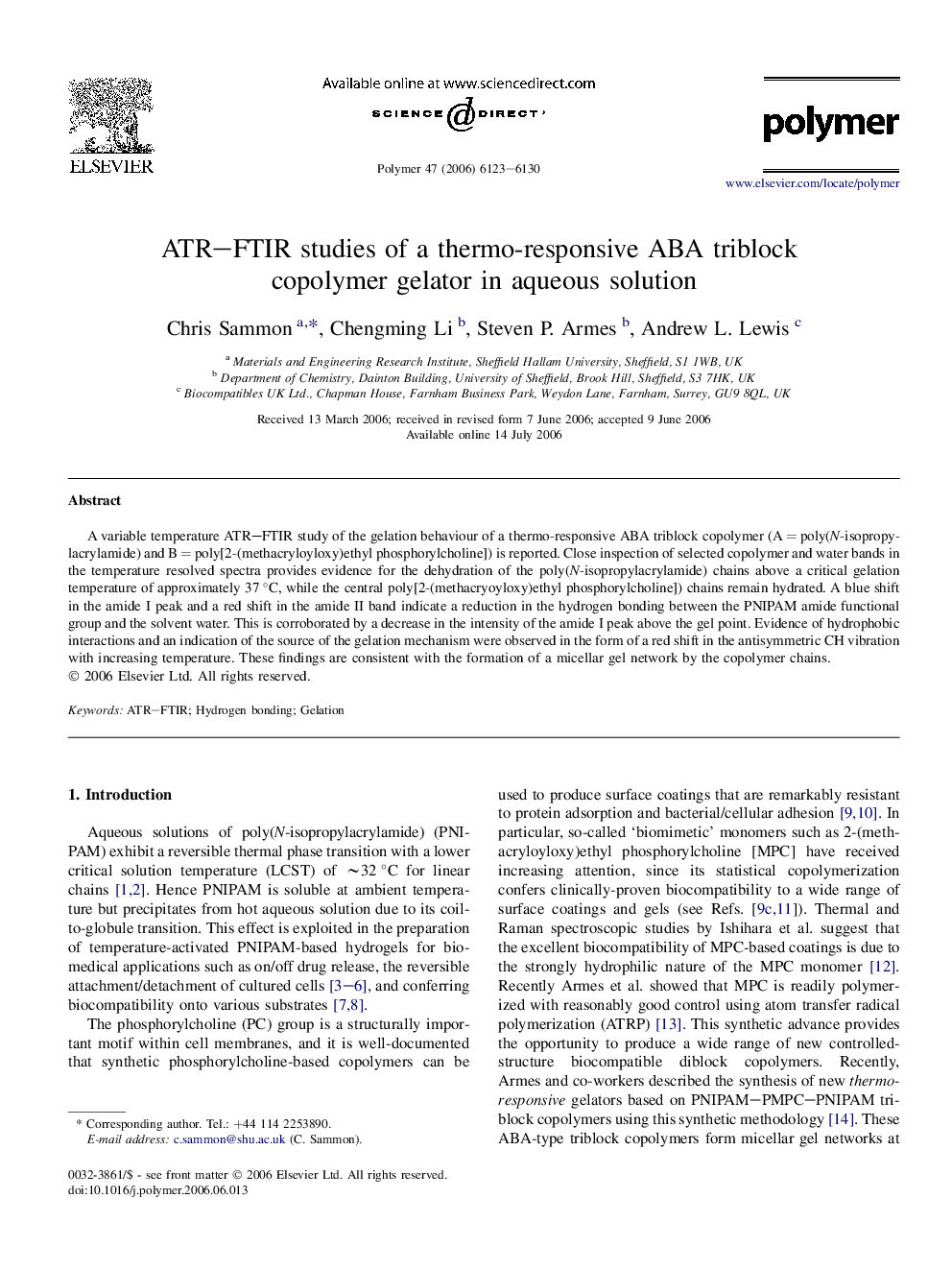| Article ID | Journal | Published Year | Pages | File Type |
|---|---|---|---|---|
| 5188983 | Polymer | 2006 | 8 Pages |
Abstract
A variable temperature ATR-FTIR study of the gelation behaviour of a thermo-responsive ABA triblock copolymer (A = poly(N-isopropylacrylamide) and B = poly[2-(methacryloyloxy)ethyl phosphorylcholine]) is reported. Close inspection of selected copolymer and water bands in the temperature resolved spectra provides evidence for the dehydration of the poly(N-isopropylacrylamide) chains above a critical gelation temperature of approximately 37 °C, while the central poly[2-(methacryoyloxy)ethyl phosphorylcholine]) chains remain hydrated. A blue shift in the amide I peak and a red shift in the amide II band indicate a reduction in the hydrogen bonding between the PNIPAM amide functional group and the solvent water. This is corroborated by a decrease in the intensity of the amide I peak above the gel point. Evidence of hydrophobic interactions and an indication of the source of the gelation mechanism were observed in the form of a red shift in the antisymmetric CH vibration with increasing temperature. These findings are consistent with the formation of a micellar gel network by the copolymer chains.
Keywords
Related Topics
Physical Sciences and Engineering
Chemistry
Organic Chemistry
Authors
Chris Sammon, Chengming Li, Steven P. Armes, Andrew L. Lewis,
